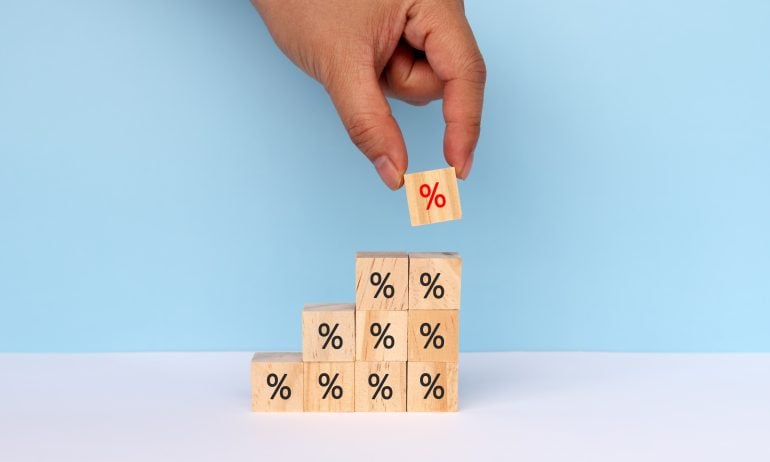What Are Basis Points? Definition, How to Use and How to Calculate

Many or all of the products featured here are from our partners who compensate us. This influences which products we write about and where and how the product appears on a page. However, this does not influence our evaluations. Our opinions are our own. Here is a list of our partners and here's how we make money.
What is a basis point?
A basis point is one hundredth of a percent, so 100 basis points is equivalent to 1%. “Basis point” is sometimes abbreviated to “bp” and “basis points” to “bps.”
When are basis points used?
Basis points are often used to measure a difference in percentages. You’ll often find them in news coverage or conversations around financial topics, such as changes in interest rates, and political polls and in scientific data.
That’s because they are helpful in calculating and communicating precise figures. Measuring with basis points helps prevent ambiguity and inaccuracy.
For example, if you’re discussing an interest rate that is currently 5%, and you say it’s expected to increase 10% next month, that increase could be interpreted differently.
Someone could interpret the new rate to be 15% (if they simply added the two figures together: 5% + 10% = 15%). Someone else could interpret the new rate to be 5.5% (if they took 10% of 5% and added that number to the current rate of 5%). But, if you say instead that the 5% interest rate is expected to increase 1,000 basis points, then it’s clear you mean that the new rate will be 15% (since 1,000 basis points = 10%).
In the world of personal finance, you may hear basis points mentioned in relation to:
The Federal Reserve: “The Fed announced a rate increase of 25 basis points.”
Mortgage rates: “Mortgage rates have increased a whopping 400 basis points in less than a year.”
Investing: “The average expense ratio for mutual funds dropped 3 basis points last year.”
» Learn more: Find out how the Federal Reserve affects mortgage rates

Member FDIC
Barclays Online Savings Account

4.35%
$0

Member FDIC
EverBank Performance℠ Savings

5.15%
$0
How to calculate basis points (bps)
To calculate how many basis points a percentage figure is, multiply the percentage by 100:
0.30% x 100 = 30 basis points
To calculate the percentage from basis points, divide the points by 100:
75 basis points / 100 = 0.75%
Here’s a quick reference guide for converting basis points to percentages.
Basis Points | Percentage |
|---|---|
1 | 0.01% |
5 | 0.05% |
10 | 0.10% |
50 | 0.50% |
100 | 1% |
500 | 5% |
1,000 | 10% |
5,000 | 50% |
10,000 | 100% |
50,000 | 500% |
Learn more
On a similar note...
Benefit from better rates
As rates rise, see our picks for the best high-yield online savings accounts.
⏰ Limited-time offer
4.60%
With $0 min. balance for APY
$300
Limited-time offer
Earn up to $300 with direct deposit. Terms apply.









